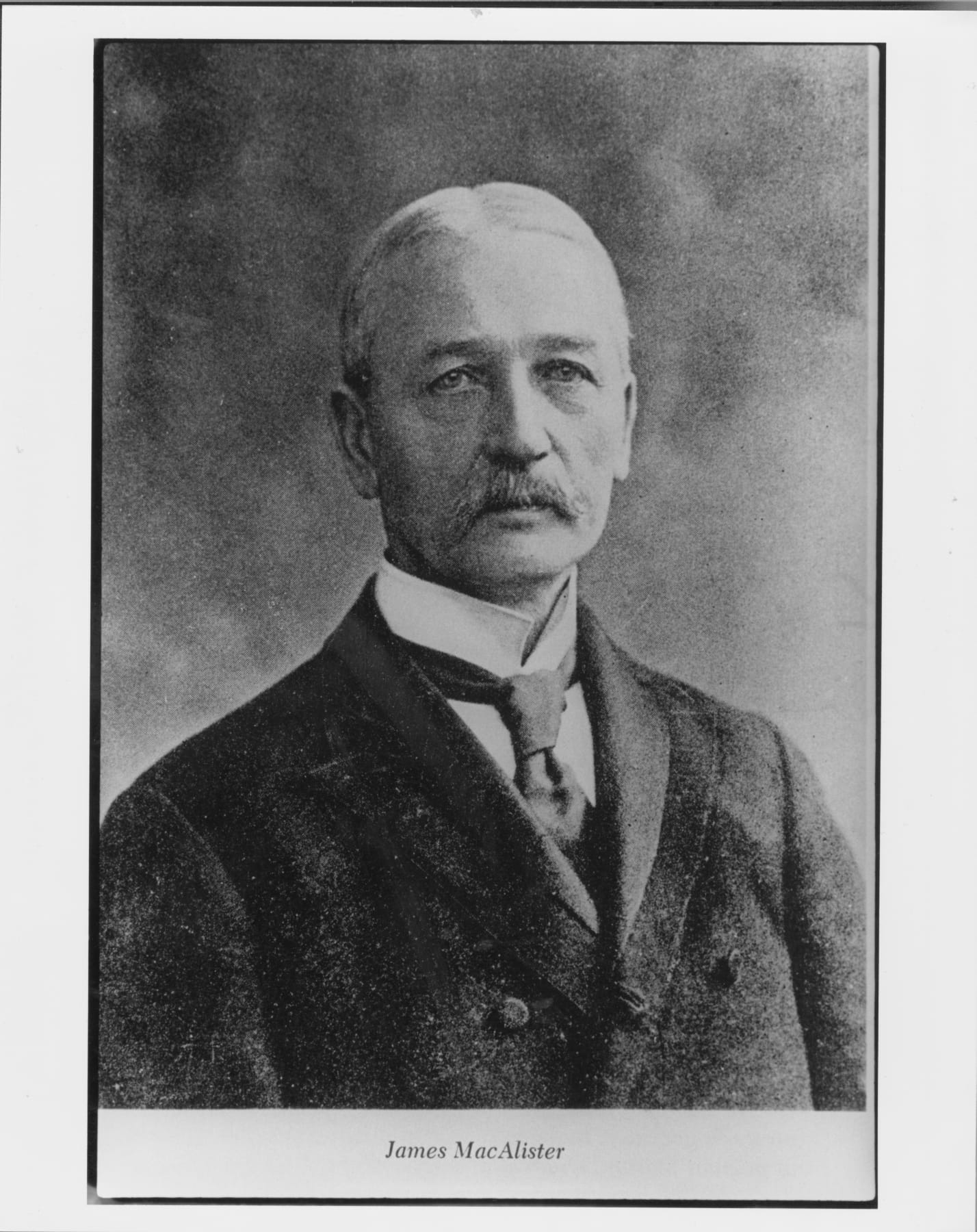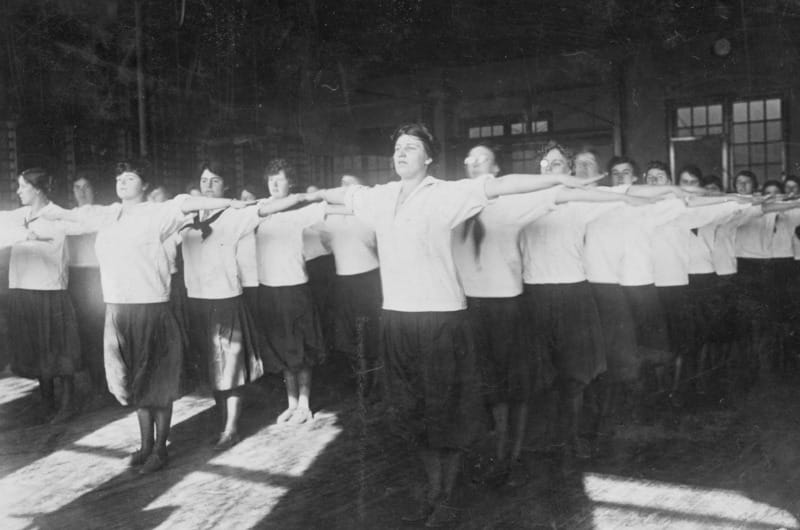What Was Drexel Like 125 Years Ago?

This article is part of the DrexelNow “Faces of Drexel” series honoring Drexel’s history as part of the Universitywide celebration of the 125th anniversary of Drexel’s founding in 1891.
The Drexel University of today is quite a different place than the Drexel Institute of Art, Science and Industry when it was founded in 1891.
For starters, the entire institution was run entirely in Main Building — and not even the Main Building of today, since Randell Hall was built (known then as East Hall) in 1902 and Curtis Hall in 1928.
Then there was the class size: Drexel’s first graduating class was composed of just 70 students. About 3,000 students walked at graduation this past June.
And what about the classes themselves? There were just 11 different departments, with “department” meaning a looser and less conservative version of a modern collegiate department. That number is closer to the amount of departments in a single Drexel college or school today.
As we all know, the Drexel that grew out of this small, fledging institution has expanded enormously. We now have approximately 26,000 students; over 200 degree programs; 15 colleges and schools; and three Philadelphia campuses. We are one of America's 15 largest private universities and, as previously reported in DrexelNow, recently ranked in the top 8 percent of all U.S. colleges and universities. Locally, we are one of the top 10 private employers in Philadelphia.
It’s easier to look back and see what Drexel was like in 1891 to gauge how much we have grown. That begs the question: what would the Drexel of yesterday think of the Drexel of today?

That question is unanswerable, of course, but we do know that even before classes started, Drexel was looking forward to the future (a tradition still continued today). Drexel’s first president, James A. MacAlister, said as much when he accepted the deeds of trust at the institute’s Dec. 17, 1891 founding.
“We shall move slowly at first; we shall have to solve some difficult problems; we shall need to think deeply and work cautiously; but there is a bright and ever-opening future ahead,” he said. “Bearing the great purpose of the founder in mind and counting upon the confidence and encouragement of the public, we shall push forward the development of the several departments as rapidly as circumstances may permit; and we have faith that in time the Drexel Institute will realize all that splendid foundation which it has received gives cause to expect.”
Less than a month after MacAlister’s speech, general organizational plans were set in motion. Registration for classes began on Jan. 4, 1892 and work was officially started at Drexel in February. By September, the institute was in full operation to teach men and women of all races, religions and socio-economic statuses.
Drexel’s founding 11 different departments were: the art department; the scientific department; the department of mechanic arts; the department of domestic economy; the technical department; the business department; the department of physical training; the normal department for the training of teachers (“normal” meaning traditional instruction); the department of lectures and evening classes; the library and reading room (held in the space to the left of the court, where Drexel Central is today); and the museum (held in the space to the right of the court, behind the Office of the President). It’s easy to see which departments were discontinued or grew into schools and colleges frequented by Drexel students and faculty then and now. The last two departments were intended to supplement, rather than teach, courses, and now make up Drexel’s library system and The Drexel Collection today, respectively.
The amount of training and cost of classes depended on the department. Total tuition for two years of instruction cost less than $150 (about $4,000 in 2016) for students in mathematics, mechanical drawing, physics, chemistry, shop work in wood and iron, machine construction from working drawings, theory and practice of the steam engine and pattern making. Two years of courses in domestic science cost $120 (about $3,200 in 2016). A five-month term of instruction in the business department, including supplies, cost $23.50 (about $630 in 2016). Evening classes cost about $3 a term (about $80 in 2016).

Drexel’s founder, financier and philanthropist Anthony J. Drexel, initially wanted all courses to be free. MacAlister dissuaded him, believing that people might abuse that gift and not seriously avail themselves of the opportunities offered. Still, cost was low because Drexel’s endowment was ample at that time.
Drexel’s faculty was comprised of 37 men and women, who were chosen for their practical skills and teaching ability rather than academic accomplishments. The administrative staff was much smaller, due to departmental self-management.
In the first two years, each department held its own commencement until an institute-level ceremony began in 1894. Women often wore white — domestic science graduates sometimes made their own dresses — and carried flowers tied with orange, Drexel’s then-color.
Some traditions still remain from Drexel’s beginning. Main Building’s Great Court was decorated for the holidays then, as now. “This is a praiseworthy custom, which began early in the history of the Institute and never fails to interest everybody in any way connected with it,” the Drexel Institute Bulletin stated in a 1904 edition.
Student life was fostered in these early days as well. An athletic association for men’s sports, responsible for organizing games and fostering student interest in athletics, was established in 1895; a women’s athletic association was formed sometime before 1908. Fraternities and sororities were popularized beginning in 1900 and students could get involved in extracurricular activities like student publications, bands, orchestras, glee clubs and theater.

Everyday life at Drexel operated this way during MacAlister’s 22-year presidency (the longest in University history) until he resigned in poor health in 1913, dying six months later.
“How fully the Founder trusted and relied upon him, with what insight and cordial sympathy he entered into and developed the plan of the Founder, the success with which he organized and carried through the Institute from its formative days of experiment to its present eminent position among the schools of the country, is recognized and appreciated by all,” the Board of Trustees (then under its fourth president, the founder’s son-in-law Alexander Van Rensselaer) wrote in a resolution upon MacAlister’s resignation.
As it turns out, MacAlister’s contributions to Drexel’s early years, some of which are still in existence 125 years later, are still truly “recognized and appreciated by all” now in 2016.
In This Article
Drexel News is produced by
University Marketing and Communications.

